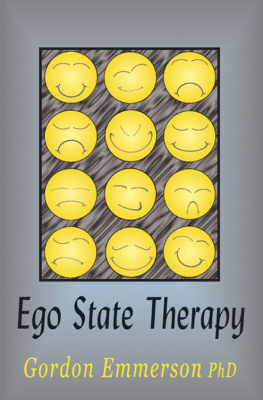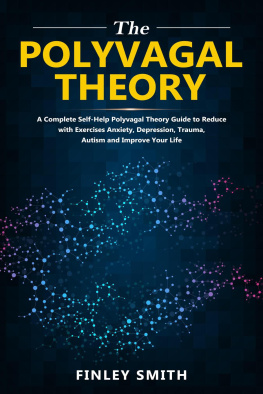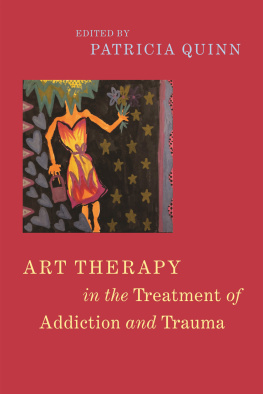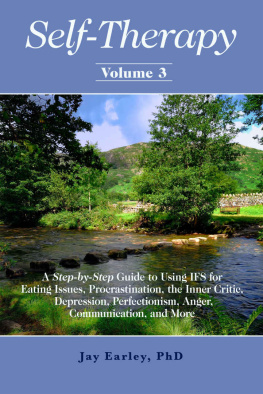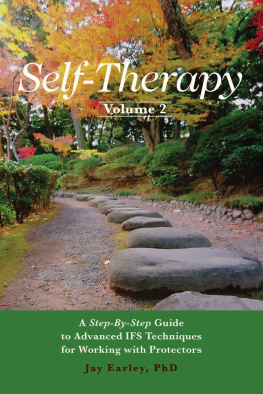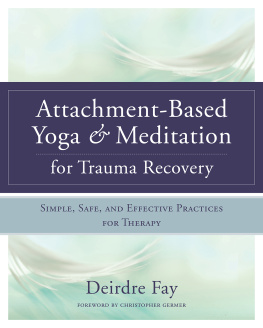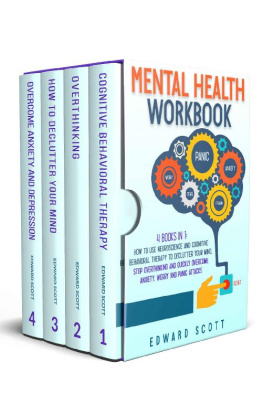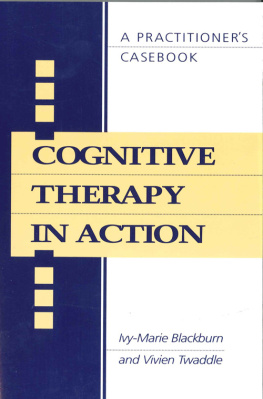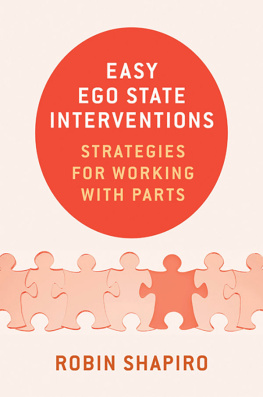Praise for Ego State Therapy
An interesting and, in many ways, invigorating new look at Ego State Therapy has been presented by Dr. Gordon Emmerson of Australia in his new book. Dr. Emmerson takes the technique away from the usual neurosis therapies and/or personality dysfunctions and strides into the realm of developing innovative techniques with which to approach therapeutic dilemmas, experienced by the patient/client as ambivalence, feeling stuck in old patterns of behavior and interactions, processing intrusive traumatic experiences, and dealing with unwanted parts and aspects of the self.
Marlene E Hunter, MD, FCFP(C), Past President, ASCH, ISSD, CSCH(BC), Director, Labyrinth Victoria Centre for Dissociation
Gordon Emmerson brings to contemporary Ego State Therapy a voice that is creative, unique, and helpful. Ego State Therapy will undoubtedly serve as a handbook for many who want to learn more of the hands on aspects of this form of treatment. He is to be commended especially for his applications of Ego State Therapy to the difficulties of the walking neurotic.
Claire Frederick, MD, Editor, American Journal of Clinical Hypnosis, co-author of Healing the Divided Self: Clinical and Ericksonian Hypnotherapy for post-Traumatic and Dissociative Conditions and Inner Strengths: Contemporary Psychotherapy and Hypnosis for Ego-Strengthening
Mind, matter and life are the three distinct factors that instil Man with inconceivable possibilities, of which Ego forms a crucial part. Ego determines whether he becomes his own creator or destroyer. In him are found both evil and virtue, both criminal tendencies and saintly characteristics. He may either be a blessing or a curse to himself and others. Thus the good old saying, some are wise and some are otherwise. Ego State Therapy by Gordon Emmerson incorporates hypnotherapy and presents innovative techniques of working with Ego States. The theories of Ego State and the practical methods illustrated in this book will enable the reader to master the therapy with ease and thus to harness his own resources. This book will be a very valuable addition to the subject of Ego State Therapy.
Professor V. M. Mathew MBBS, DTM&H, DPM, MRCPsych, M.Phil
This book will be a very useful addition to any therapists library and particularly beneficial to those new to the profession, in that it will give them an even greater grasp of the technique known to many as Parts Therapy. Although the book is, in essence, based on the Watkins Ego State Therapy, the author has built on the technique and used innovative ways of expanding its use. Some of the case studies in the book are fascinating and are used to enable the reader to more easily understand how the technique works and the uses it can be put to. I must confess that I had never thought of using the therapy in some of the ways that the author does and can see that its use could be expanded in any number of different directions, thus enabling the therapist to do brief therapy with many clients who might have been considered too difficult to treat quickly.
Gordon Emmerson has drawn on some of the different therapies which use these techniques, including Transactional Analysis. Gestalt Therapy and Voice Dialogue Therapy and he illustrates how Ego State Therapy can be incorporated into and used alongside almost any discipline to very good effect.
I found this book very enjoyable and easy to understand and I felt as if Id added considerably to my tool-box after reading it.
Pat Doohan, FIDELITY _ The Journal for the National Council of Psychotherapists
Ego State Therapy is a rapid psychotherapeutic method which uses the recognized advantages of hypnosis to produce the lasting positive outcomes characteristic of psychoanalysis with intervention times rivaling cognitive-behavior therapy. Representing the new generation of Ego State Therapists, Dr. Emmerson casts the masterful development of the approach over the years by John G. Watkins and his associates into the first true textbook on Ego State Therapy that clearly, accurately and succinctly shows clinicians and advanced clinical psychology students how to use Ego State Therapy with their patients. Much more than a how to do approach, Ego State Therapy keeps the series of well developed and time proven specific interventions accurately grounded in the underlying theory. It will become a classic as an essential text for those psychologists and psychiatrists who recognize the importance of Ego State Therapy to the needs of their clients.
Professor Arreed Franz Barabasz, EdD, PhD, ABPP, Washington State University, USA, Editor, International Journal of Clinical and Experimental Hypnosis, President, American Psychological Association Div. 30 Society for Psychological Hypnosis
We have all experienced good teachers in our time someone who engages us, holds our attention and shares knowledge with us, filling us with enthusiasm for the subject. Gordon Emmerson is such a teacher. His practical approach of providing the theory of a technique, demonstrating the technique and then monitoring his students as they practice the technique is unsurpassed.
Gordon has successfully transposed his teaching expertise into this book that has been described as a classic as an essential text. It is a book that meets the needs of all readers, regardless of their level of expertise in Ego State Therapy.
The author discusses the goals and benefits of Ego State Therapy and the nature, development and permanence of ego states. He includes the steps to be taken in numbered point form, offering a full explanation of each step and demonstrates with client/therapist dialogue. The only thing missing is for the author to be there when the student practices. At the end of the book, we are taken through 3 sessions; each step is fully explained and there is no holding back of information.
I have fulsome praise for this most welcome text that gives valuable insight into Ego State Therapy and a practical approach to using the techniques in ones practice.
Lyn Macintosh CMAHA ASCH, Hypnopatter, Official Newsletter of the Australian Hypnotherapists Association
A wonderful encapsulation of an approach to therapy that embraces the multi-level communication within our psychotherapeutic system. Students of Erickson and Gilligan will find further clarification of familiar processes and principles of healing through self-relating. Gordon Emmerson is another welcome voice in the movement of therapy that works to embrace and respect the forces of the unconscious/ego relationship, enhancing understanding, expression and tutilage of parts rather than removing or dismissing problem states as irrational or unresourceful. Many scholared and experienced therapists believe that there are many psychotherapies but only very few core psychotherapeutic processes. If so, Emmerson has done much to elucidate the practice and application of one of these core processes that obeys the natural laws of psychotherapeutic recovery and growth and is drawn from experience, skilled technique and wide knowledge.
Pamela Gawler-Wright, Beeleaf Training, www.beeleaf.com
Ego State Therapy is based on the premise that our personality is not a homogenous whole, but is formed of separate parts. This idea in itself is ancient - you can find it inferred in writers from Aristotle to Shakespeare. More recently it is echoed in the Parts Therapy approach which has its roots in the work of Fritz Perls and was further developed by Gil Boyne, Charles Tebbetts and Roy Hunter. Systemic therapists talk of our Inner Others, and Transactional Analysis has explored the term Ego States in a somewhat different way. The form of therapy that Emmerson describes derives from the work of John and Helen Watkins and is an eclectic mix with hypnosis being a strong ingredient.
Next page
